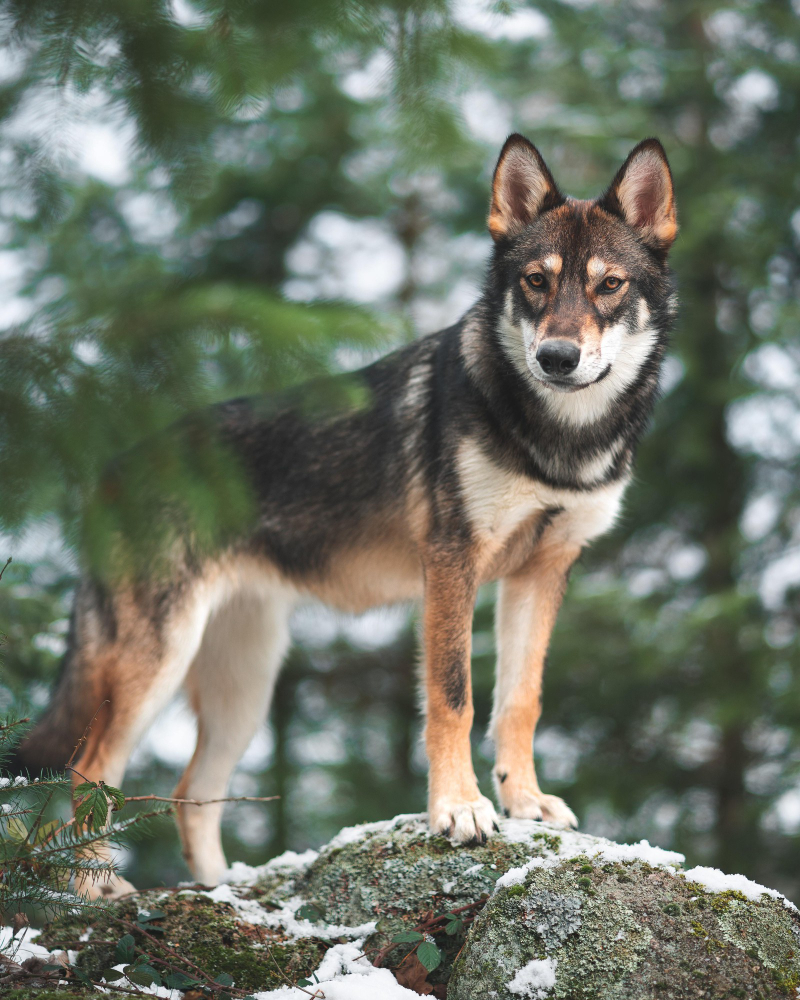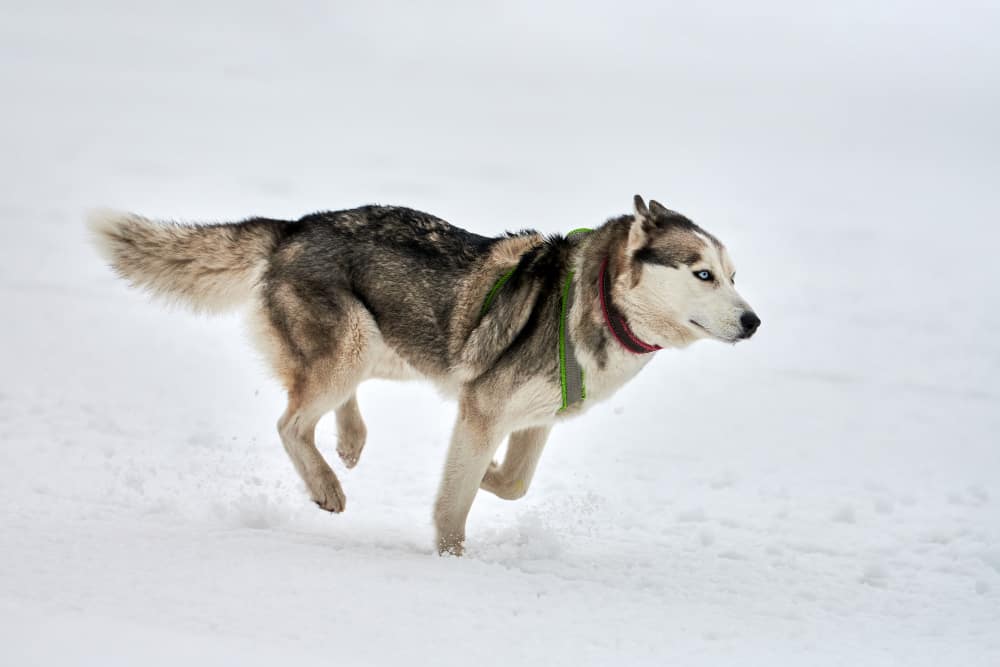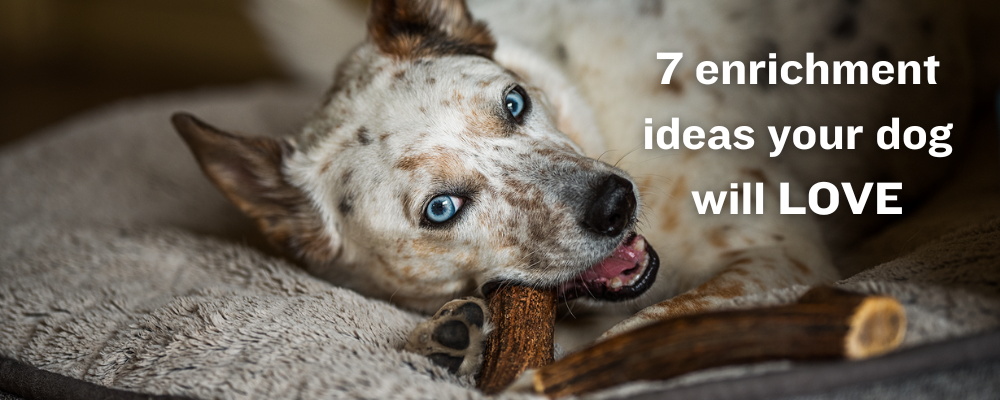If you are the proud parents of a German Shepherd Husky mix, you know they love romping in the snow. But, how cold is too cold for the German Shepherd Husky mix? After all, extreme cold may still be dangerous to your dog and may cause frostbite or deadly hypothermia.
A German Shepherd Husky mix can usually handle temperatures as low as 25°F (-4°C) to 10°F (-12°C) if you take proper precautions. However, Shepsky’s threshold for cold depends on other facts such as age, health, and genetics.
But how do we know when temperatures are getting dangerously low for our German Shepherd Husky crosses? To answer this, we consult the scientific evidence about this designer dog’s special ability to handle cold weather.
More on German Shepherd Husky Mix: A Designer Breed You Can’t Miss

- A Designer Breed: German Shepherd Husky Mix (Gerberian Shepsky)?
- How Big Do German Shepherd Husky Mix Puppies Get?
- How Smart Are German Shepherd Husky Mixes?
- Are German Shepherd Husky Mixes Easy to Train?
- Are German Shepherd Husky Mixes Good with Cats?
- How Cold is Too Cold for a German Shepherd Husky Mix?
- Can Shepskies Live Outside by Themselves?
- Can a Shepsky Live in an Apartment?
- What is the Lifespan of a German Shepherd Husky Mix?
- How Much Does a German Shepherd Husky Mix Cost?
You may also like:
How cold is too cold for a German Shepherd Husky mix?
Temperatures usually get too cold for a Gerberian Shepsky at around 25°F (-4°C), but many can tolerate colder weather if needed. Because they are a mixed breed, their ability to handle cold depends on which traits they inherit from their parent breeds.
A Shepsky that takes after a German Shepherd may not be able to handle cold as much as one that takes after a Husky. Many Shepskies who have inherited the Husky’s genetic advantages can handle extreme cold. This video shows German Shepherd Husky mixes going for a fun walk in -71°F!
However, a GSD mix that inherited a short or single coat or doesn’t have the same metabolism as a Husky may also not tolerate cold as well. In this case, they should be treated like German Shepherds in winter.
Can my German Shepherd Husky mix sleep outside?
German Shepherd Husky Mix can sleep outside, although they do better indoors as part of their family. If they must sleep outside, be sure they have proper shelter from harsh weather. They are especially prone to heatstroke and need shade and cool areas in warm climates.
How cold is too cold to let your GSD Husky mix sleep outside?
Most dogs risk hypothermia when temperatures hit 30° F (1° C). However, the Shepsky is usually better adapted to the cold have been known to sleep outside in much colder weather, up to -13° F.
But this does not mean they should sleep in freezing temperatures, as they may not have inherited the cold tolerance of the Husky and extreme cold may be fatal.
How long can my German Shepherd Husky mix go outside in below-freezing temperatures?
Cautious Shepsky owners can stick to the rule of 15 to 20 minutes outside in below-freezing temperatures. This is especially true if your dog has a short or single coat, if they are puppies, sick, or old.
However, German Shepherd Husky mixes usually have a good tolerance for cold and are usually comfortable in temperatures below 30° F (1° C). They usually start getting cold around 25°F (-4°C).
How long can my German Shepherd Husky mix exercise in the cold?
German Shepherd Husky mixes can exercise intensively in the cold for hours. A general rule of thumb is you can exercise your Shepsky as much as they need between 30° F (1° C) and 25°F (-4°C). If it gets colder than that, you can start limiting exercise to 30 minutes. Avoid exercise if the temperature is below 10°F (-12°C).
How does my German Shepherd Husky mix stay warm in the cold?
It’s easy to think that Shepsky is resilient against cold just because of their thick coats. But the truth is that they have physical advantages other dogs don’t have. According to Science.org, sled dogs like Siberian Huskies inherited cold adaptations directly from Siberian and Pleistocene wolves. Husky descendents like Shepskies usually have the same advantages.
- Husky mixes can oxygenate their blood at lower temperatures
Sled dogs from the North, like Huskies and Eskimo dogs, have a special oxygen-binding ability in their blood that only arctic animals have. This means they oxygenate their blood at temperatures that would kill most other mammals.
- Husky mixes have a special metabolism
Shepskies often inherit a special skill from their husky parents. This is to speed up their metabolism to be warmer in extreme cold.
They speed up the metabolic rate (MR) to: ”working MR during winter was 7.9 times the MR of resting dogs in winter, or 12.2 times baseline MR” (Journal Of Comparative Psychology). This ability allowed the Shepskies ancestor, the Inuit dog, to survive at 13°F (−25°C).
- The German Shepherd Husky mix has a double thick coat
The Shepsky should inherit a double coat from both the German Shepherd and the Husky. This means water-resistant, protective guard hairs and a soft undercoat to keep them warm.
- Shepskies have amazing countercurrent heat exchanger paws
Frostbite is rare in dogs, especially the Shepsky. This is because they have a special arrangement of blood vessels in their paw pads to lock in their body heat. In fact, dog paws are pretty similar to penguin feet!
- Dogs use piloerection to protect themselves from cold
Piloerection is simply when the hairs on a dog stand upright, like when we get goosebumps and our arm hairs go up. It’s a neat trick for the Gerberian Shepsky, who has an extra-thick coat as it lets them trap air close to their skin where it warms up. This is great insulation.
- Hormonal adaptations
One study in 2007 found that sled dogs have hormonal differences to help them adapt to the cold. They produce more melatonin with exercise than other dogs, and this hormone helps them adapt to changing seasons.
How can you tell if your dog is too cold?
One danger of a German Shepherd Husky designer breed is that they love playing in the cold so much that they aren’t always aware they may be getting too cold. This is why you must take precautions to protect them against frostbite and limit their time outdoors. Some signs to look out for include:
- Shivering
- Lifting paws off the ground
- Refusing to move from sheltered areas, such as under your car,
- Whining or showing signs of distress like lip licking, a hunched posture, and a tucked tail,
- Staring at you before glancing at somewhere warm, like the house.
- Curling into a ball and not wanting to move.
When should you keep your Husky German Shepherd Mix out of the cold?
As much as your Shepsky may love nothing more than running and even eating snow, sometimes we need to be extra careful. Here are some reasons your dog may need to avoid the outdoors in winter.
Old German Shepherd mixes are not fit for cold weather
Senior dogs have a slowing metabolism, often losing muscle mass and insulating fat. They are also more prone to diseases. This means old dogs cannot effectively defend themselves from the cold.
Sick Dogs are at risk in the cold
Shepskies with Cushing’s disease, hypothyroidism, heart, kidney, and other medical problems can not regulate their body temperature effectively and should stay out of the cold.
Puppies cannot handle cold temperatures.
Newborn puppies can regulate their own body temperature at eight weeks, and they will only get their protective adult coat between 14 weeks and six months. Until then, keep young Shepskies out of the cold.
Single or short-coated Shepskies should not be exposed to cold
German Shepherd Husky mixes that inherited a short or single coat may be unable to withstand extreme temperatures. The short-coated Shepsky in this video may love the snow, but its owner will still need to be more careful:
How to protect your Husky German Shepherd Mix from the cold
Even though the Shepsky is extremely cold-hardy, it’s still good practice to monitor our dogs and protect them from harsh weather. Even the Chukchi tribes of Siberia let their Huskies sleep indoors, so we should take precautions in winter too.
- Keep German Shepherd Husky mixes indoors as much as possible
Firstly, it’s important to limit your Shepsky’s time outdoors. If your dog is healthy, take them outside for high-intensity activities like fetch to wear them out when it is sunny outside. But keep them inside when they are resting.
- Build a warm winter shelter outside
German Shepherd Husky mixes are hardy dogs, and there are places where they are kept outside despite the weather. If this is unavoidable, make sure your dog has a sturdy shelter available, preferably insulated with warm bedding.
- Brush your dog’s coat for better insulation
As their thick, double coat traps air close to the skin, warming the air and helping the dog stay warm. If a coat is matted, the dog cannot properly insulate and protect itself from the cold. Also, brush any clumps of snow from your dog’s coat to prevent them from breaching the protective guard hairs.
- Protect your dog’s paws from ice and snow
The paws are the most vulnerable to frostbite. Protect your dog with booties if possible, and trim the hair between thier pads to keep it from gathering snow between the toes. Don’t forget to clean and warm the paws after they go outside.
- Keep active dogs hydrated
Shepskies love intense activities like skijoring in the snow, and they may feel less thirsty in the cold. Ensure they drink water to avoid dehydration, even if they eat snow.
- Keep their skin from drying out in the cold air
Apply a paw balm like Musher’s Secret or Vaseline to coat your dog’s paw pads. This prevents ice from getting stuck on the paw or between the toes. Put some on the nose, too, as it traps moisture against the skin to keep the pads and nose from drying out and cracking in the cold air.
Keep their skin from drying out with humidifiers and avoid baths as they strip the coat of natural oils. Do not apply coconut oil in winter to their coats, as heavy oils will interfere with the coat’s insulating ability.
- Remove dangerous snow piles
If you live in an area like Alaska with heavy snowfall, beware of snow piled on rooves that may fall on your dog. Snow piled against a fence may also give your Shepsky the perfect escape route.
- Beware poisons and winter hazards
With winter comes dangers like antifreeze lying around the garage or salted pavement that can burn their paws. Be aware of your dog’s environment to avoid unhappy accidents.
Dangers of cold for your Husky German Shepherd Husky mix
This designer breed may seem impervious to glacial temperatures, but that doesn’t mean we shouldn’t be aware of the risks. If you live in a cold climate, ensure you know the symptoms of hypothermia and frostbite so that you can act quickly if needed.
Signs of hypothermia in dogs
If your dog is out in the cold, keep an eye out for these signs of early hypothermia:
- Sudden excessive panting that slows until the dog is barely breathing
- Pale gums
- Dilated pupils
- Lost consciousness
If you see these symptoms, immediately wrap your dog up in blankets and move them to a warm area. They may need to see the vet for an IV in severe cases.
Signs of frostbite in dogs
- The affected area turns pale, gray, blue, or turns black
- Swelling in the affected area
- Blisters or open sores in the area
- The area is painful when touched
- The area is cold or brittle
- The area turns red and inflamed after warming
If you suspect frostbite, immediately move your Shepsky to a warm area and contact your veterinarian.
Conclusion
The German Shepherd Husky mix can usually handle some pretty chilly temperatures. Indeed, Shepskies in Russia enjoy frolicking in an unbelievable -71°! But this is not the norm for most of these exceptional designer dogs. While they may inherit the Husky’s cold-tolerating superpowers, some Shepskies may be more like the German Shepherd.



